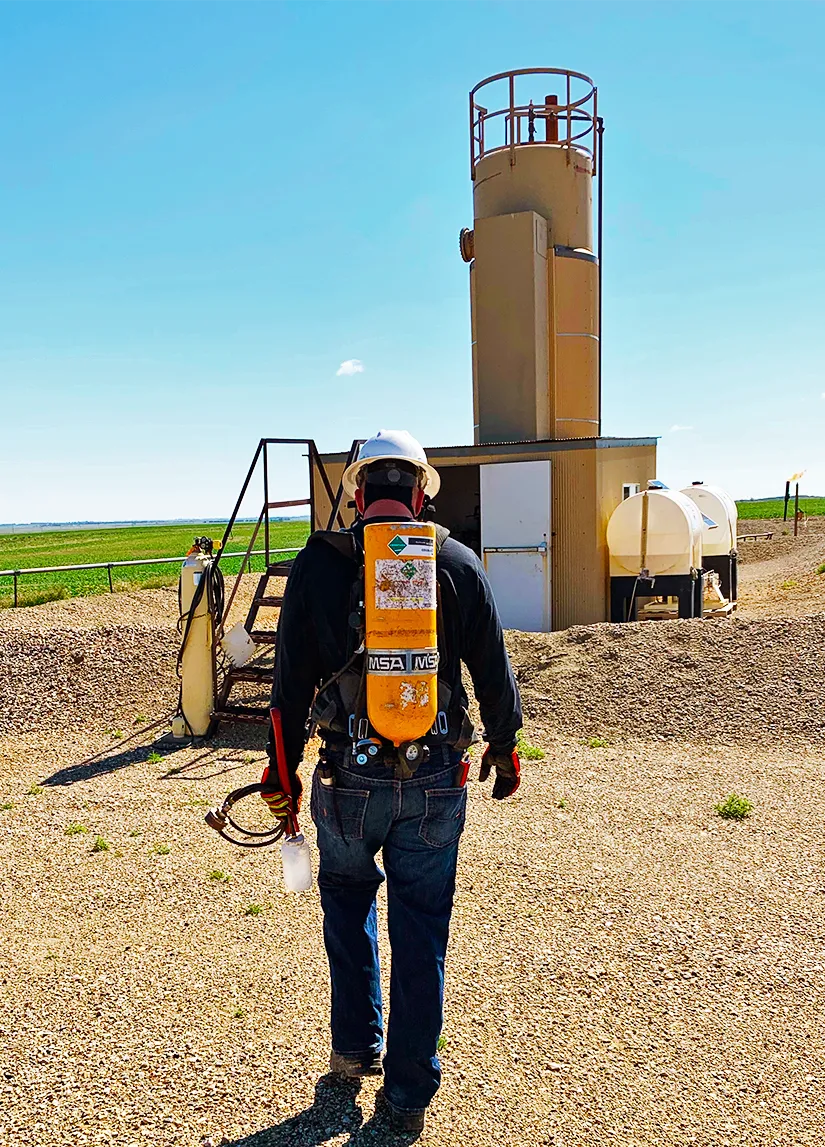Environmental Compliance

Oilfield Safety in 2025: Where Common Sense Meets Cutting-Edge Technology
Oilfield Safety in 2025: Where Common Sense Meets Cutting-Edge Technology
The Unchanging Need for Common Sense in a Tech-Driven World
The oilfield has always demanded sharp instincts and practical wisdom. But in 2025, common sense alone isn’t enough—workers now have AI, IoT sensors, and automated safety systems to back them up.
At Basin Safety, we believe the future of oilfield safety lies in balancing human judgment with smart technology. This blog explores how:
✔ AI augments (but doesn’t replace) worker intuition
✔ Wearable tech acts as a "second set of eyes" for lone operators
✔ Real-time data prevents accidents before they happen
1. The Lone Worker’s Dilemma in 2025: Isolation Meets Innovation
The Persistent Challenges of Working Alone
Lease operators, well technicians, and pipeline inspectors still face:
Delayed emergency response in remote locations
Cognitive fatigue from prolonged isolation
Unpredictable hazards (H2S leaks, equipment failures, sudden weather changes)
How Technology Bridges the Gap
2025 solutions include:
Smart helmets with gas detection & fall alerts
Biometric vests tracking vitals (heart rate, dehydration, fatigue)
Automated SOS beacons triggering drone-assisted rescues
Real-World Example:
A worker in North Dakota suffers heat exhaustion—his vest detects abnormal vitals and automatically alerts the nearest medic drone, which arrives with fluids and cooling packs before he loses consciousness.
2. Common Sense Safety Practices—Now Enhanced by AI
Old-School Wisdom Still Matters
"Always have a backup plan" → Now includes satellite-linked emergency beacons
"Check your equipment twice" → IoT sensors predict mechanical failures before they happen
"Know your escape routes" → AR goggles overlay real-time exit paths in smoke or gas leaks
AI as a Safety Partner, Not a Replacement
Predictive analytics flag high-risk situations (e.g., "High H2S levels predicted at Well #42 today")
Voice-activated assistants guide workers through OSHA protocols
Machine learning adapts to each worker’s habits (e.g., reminding forgetful operators to test air quality)
3. Communication in 2025: Beyond Radios & Cell Boosters
Next-Gen Lifelines for Lone Workers
Mesh networks ensure connectivity in dead zones
Smart watches with panic buttons that share exact GPS coordinates
AI-powered chatbots that translate emergency calls into actionable alerts
Case Study:
A worker trapped in a confined space uses voice commands to activate a rescue robot, which delivers oxygen while his location is transmitted to the response team.
4. Training for the Future: Blending Instinct with Tech
2025 Safety Protocols Require New Skills
Interpreting AI hazard warnings (When to trust the algorithm?)
Using AR for equipment repairs (Guided by holographic instructions)
Mental health monitoring (Wearables detect stress levels, prompting breaks)
Basin Safety’s 2025 Training Programs
We teach workers to:
✅ Leverage tech without losing situational awareness
✅ Override AI when human judgment is superior
✅ Maintain "old-school" vigilance in a digital world
The Best Safety Strategy Combines Human and Machine
The oilfield will always demand common sense, foresight, and self-reliance. But in 2025, technology magnifies these strengths—helping workers anticipate, communicate, and survive like never before.
Don't wait for an accident to highlight your safety gaps. Contact us today or visit our website to strengthen your safety protocols and protect your team.
Contact Us:
(701) 572-8140
www.basinsafetyus.com
Archives
Categories
Benzene Testing
Bloodborne Pathogens
Breathing Air Systems
Certification Process
Confined Space Attendants
Confined Spaces
Construction Equipment Operators
Electrical
Environmental Compliance
Excavation and Trenching
Fire Extinguisher Training
Forklift Operator
Hazcom Workplace Safety
HAZWOPER
Hearing Protection Training
Heavy Equipment
Hydrogen Sulfide
Lone Worker
Lone Worker Solutions App
Monitoring
Oil and Gas
Oil Drilling
Online Training Confined Spaces
Permit-required
PPE
Radiation Safety
Rescue Equipment
Rescue Team
Safety Consultants
Safety Devices
Safety Tracking
Safety Training
Site Inspections
Training 1
Training 2
Training 3
Training 4
Training 5
Uncategorized
Virtual Access to Safety Data
Waste Haulers
Confined Space Rescue
VISIT US
4401 16th Avenue West Williston, ND 58801.
2740 Sims Street Suite B Dickinson , ND 58601
(701) 572-8140

BASIN SAFETY CONSULTING CORPORATION
Basin Safety believes in shared excellence. We are accountable to our core values:
● Pioneering Excellence Everyday
● Supporting each other to put customers first
● Asking the right questions, to ensure the greatest results.
Basin Safety Consulting © 2025. All rights reserved.
Powered By Upleveled Strategies

BASIN SAFETY CONSULTING CORPORATION
Basin Safety believes in shared excellence. We are accountable to our core values:
● Pioneering Excellence Everyday
● Supporting each other to put customers first
● Asking the right questions, to ensure the greatest results.
VISIT US
4401 16th Avenue West Williston, ND 58801.
2740 Sims Street Suite B Dickinson , ND 58601
(701) 572-8140
Basin Safety Consulting © 2025. All rights reserved.
Powered By Upleveled Strategies

